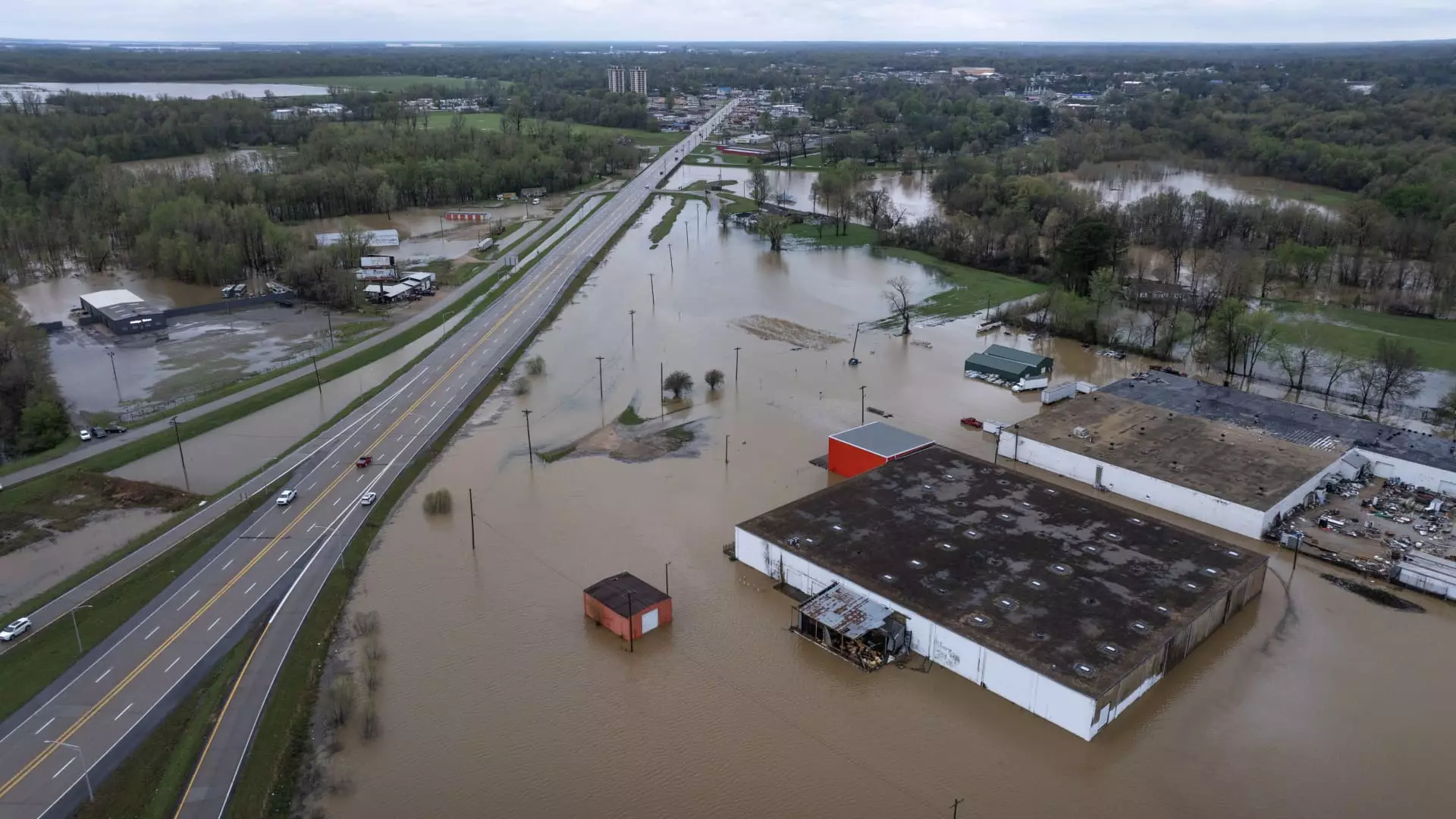As the echoes of last week’s devastating storms still resonate across the Midwestern and Southern states of the U.S., the Northeast now finds itself engulfed by a relentless downpour. The financial, emotional, and physical toll of these catastrophic weather events begs the question: how long will communities endure such natural adversity? Alarmingly, this is not merely a freak occurrence; rather, it suggests an alarming trend in our climate’s volatility that resonates with the urgency for change. The statistics are staggering; with reports indicating that at least 21 lives have been tragically lost, we are left to wonder: what can possibly be more important than addressing the underlying climate issues that have led to this preposterous situation?
Nature’s Brutality: A Wake-Up Call
The recent storms perpetrated what some might describe as a natural disaster of Biblical proportions, wreaking havoc on states from Arkansas to Indiana. The sheer speed and ferocity of these storms demonstrate a potent and undeniable truth about climate change; we are standing on the precipice of catastrophe as Mother Nature’s fury intensifies. In Kentucky—where mandatory evacuations were issued for entire communities—individual lives have been upended. The Anderson County Fire Department reported that over 40 people had to be rescued from floodwaters that obliterated homes and lives. Imagine experiencing a moment where everything you own is washed away before your very eyes. It is both heartbreaking and infuriating, forcing us to confront the reality that such storms have become a dangerous “new normal.”
Flood Watches and Public Response
As millions face the wake of destruction, news outlets caution that approximately nine million people remain under flood watches. With rising river levels inundating already vulnerable areas, the question arises: how prepared are we to confront such disasters? The intensity of recent storms—93 tornadoes reported in one week alone—should prompt communities to invest time and resources into disaster preparedness. The public sentiment should not simply be one of reaction—scrambling to assist victims—but proactive engagement in addressing climate change at the local and national levels. It’s simplistic to blame Mother Nature when our own choices precipitate these calamities.
Kentucky: The Epicenter of Misfortune
It comes as no surprise that Kentucky has become an epicenter of distress amidst the flooding; with some areas receiving a historic 15.59 inches of rain in just four days, Kentuckians are facing formidable challenges. One only needs to consider the phrase “once-in-a-generation” to understand the weight of this disaster. It trivializes the suffering and loss that communities must grapple with. Rebuilding is not a matter of merely restoring infrastructure; it means restoring entire lives that have been shaped by trauma. As we rush to aid these communities, it feels essential to view recovery through a compassionate lens, one that recognizes the deep emotional scars that a disaster inflicts on its victims.
The Broader Implications of Storm Patterns
In discussing the ongoing deluge, we must grapple with the broader implications: How will our world cope with a climate in such flux? As weather patterns grow increasingly erratic, the stakes for all of us have never been higher. The National Weather Service forecasts even more storms moving through the Southeast, which serves as a stark reminder that these events are not isolated. They are the manifestation of a changing climate that demands collective responsibility and immediate action. The continuous cycle of these emergencies leaves us soul-searching, pondering whether we are truly committed to making the necessary changes to foster resilience in our communities.
An Urgent Call for Action
While the Pacific Northwest braces for unsettled weather of its own, it becomes clear that the stakes are high for every region in this country. As advocates for change, it is essential that we galvanize public opinion toward wiser environmental policies that prioritize sustainability and long-term safety over short-term gains. The floods that sweep through our cities give a visceral urgency to this endeavor. We must rise to this challenge and advocate fiercely for stronger legislation surrounding climate resilience, environmental justice, and disaster preparedness. It is time we stop treating symptoms and start addressing the root causes of this chaos. The sobering realities of the storm should rally us together, united in a mission to safeguard our future while showing empathy and support for those already suffering the consequences.


Leave a Reply